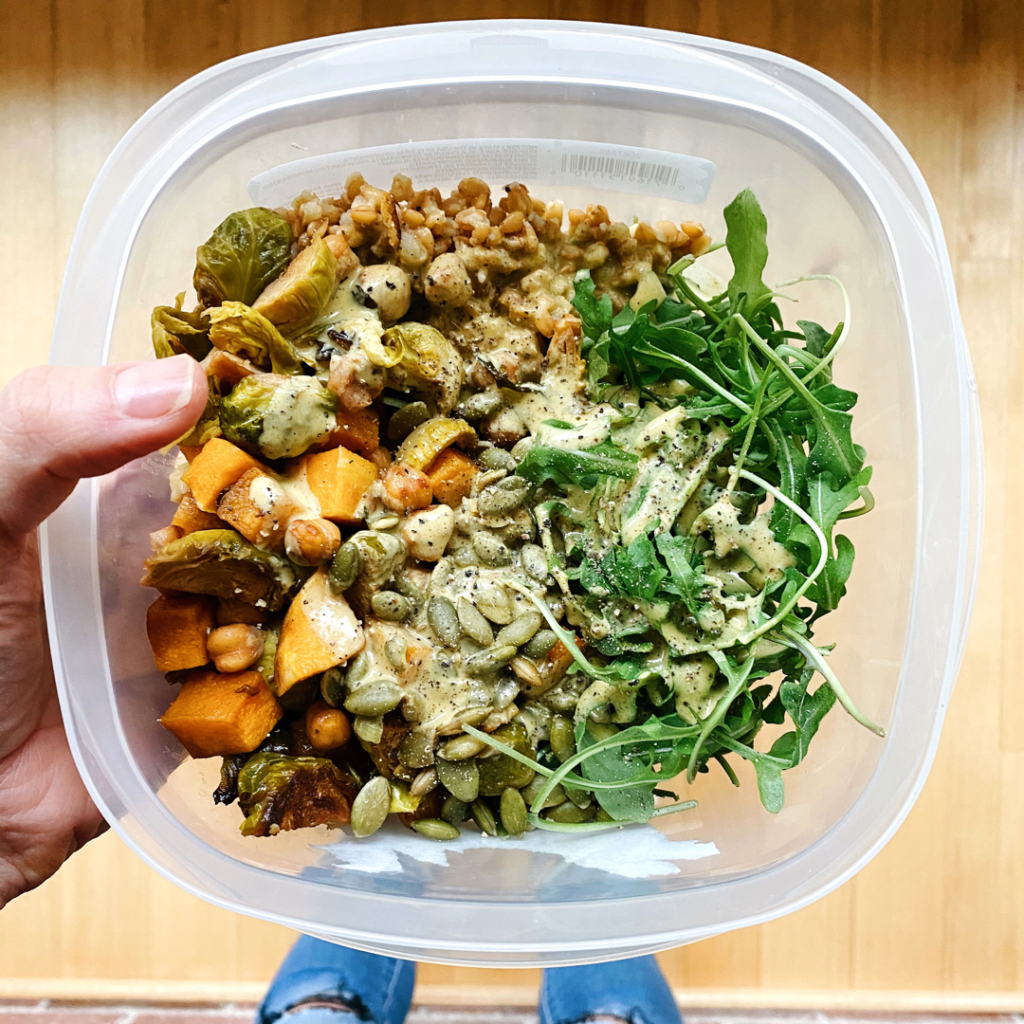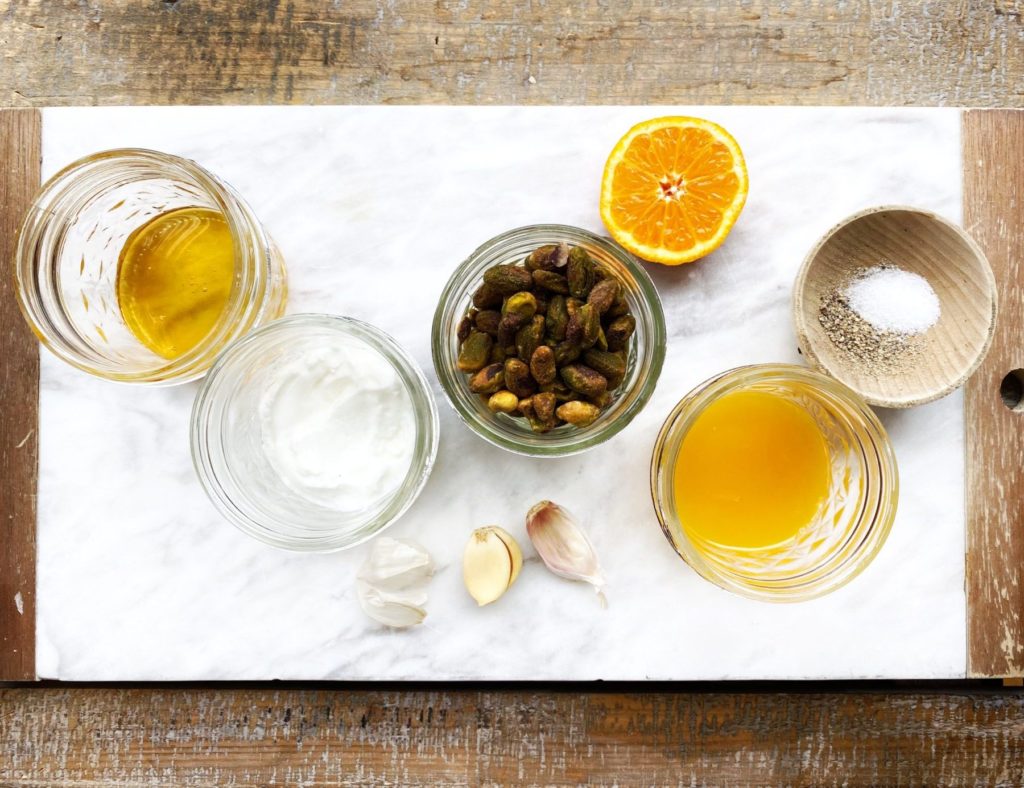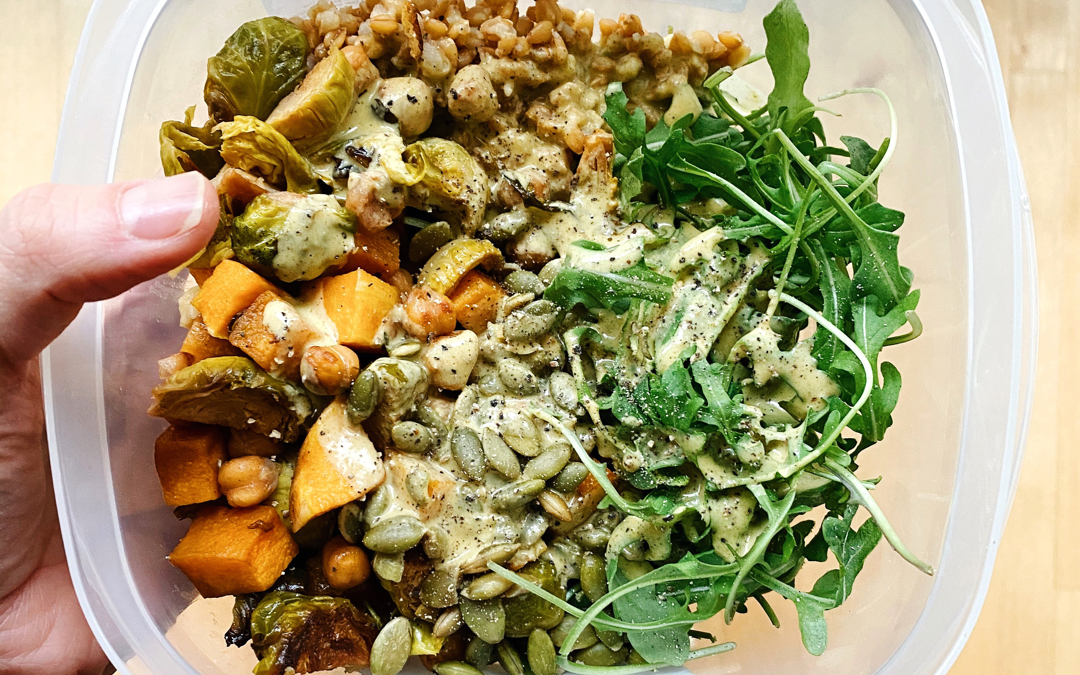This power lunch bowl aims to address two things:
- avoiding the post lunch “I’m still hungry because I only had a salad.”
- AND the “I’m so full, I need a nap, a.k.a post lunch coma.”
While it might be nice to get out of the office and go out to eat, eating out can get pricey. Plus, we tend to take in more calories, fat and salt when we eat out. Wouldn’t it be nice to look forward to a lunch you packed from home? (And, still leave you time for an outdoors lunch break walk?)
The Workplace Power Lunch

Lately, I’ve been making what I call power lunch bowls. What I love about these bowls is that I can cater them to my hunger and keep the lunch bowl ideas fresh by rotating out different ingredients within the same food “group.” The bowls are filling without feeling heavy, and when tossed with the Creamy Pistachio Citrus Salad dressing below, I really do look forward to my lunch break.
How to Build:
Like any healthy meal, it does require a bit of food prep. BUT, you will thank yourself all week long!
- Whole Grains: If I’m going to call it a “power lunch,” I often include a cooked, then cooled whole-grains. Some of my favorites include quinoa, farro, wheat-berries or brown rice. Eating cooked whole-grains increases the content of something called “resistant starches.” Resistant starches have been shown to improve gut health, blood sugar control and bone health. I might add 1/2 cup to a cup depending hunger, exercise that day and how long it will be until dinner!
- Greens: Greens help both pump of the volume & nutrition on my power lunch. My favorite will forever be arugula, but I will also include baby kale or spinach.
- Roasted Vegetables: Weekend prep often includes roasting a large sheet pan of vegetables. The list of possibilities here are endless, but I typically gravitate to Brussels, butternut squash and red onion. Sweet potatoes, parsnips, and mushrooms are also on my short-list.
- Healthy Fats: When we add fat to a salad, especially monounsaturated fats, the addition of fat makes antioxidants found in fruits and vegetables more accessible to our body. Examples of mono fats include olive oil, avocado, nuts, seeds and olives. The salad pictured here contains an olive oil dressing and roasted pumpkin seeds.
- Fruit: I love the occasional pop of sweetness in my salad via dried fruits. Chopped apricots or plums, cherries and currants are some fruits you may not have considered. However, they serve a sweet role in this salad and/are handy to pair with nuts for an afternoon snack.
The Salad Dressing:

You can’t enjoy a salad if you don’t enjoy the dressing. Most often, I’ll go the easy button route by drizzling olive oil, balsamic vinegar and a touch of honey to my salad. However, if you want to check out my latest favorite EASY DIY salad dressing, head on over to learn how to blend up our Creamy Pistachio Citrus Salad Dressing! It beats any store-bought dressing, hands down.
Now, get back to work with your renewed sense of energy and happy stomach. 🙂

